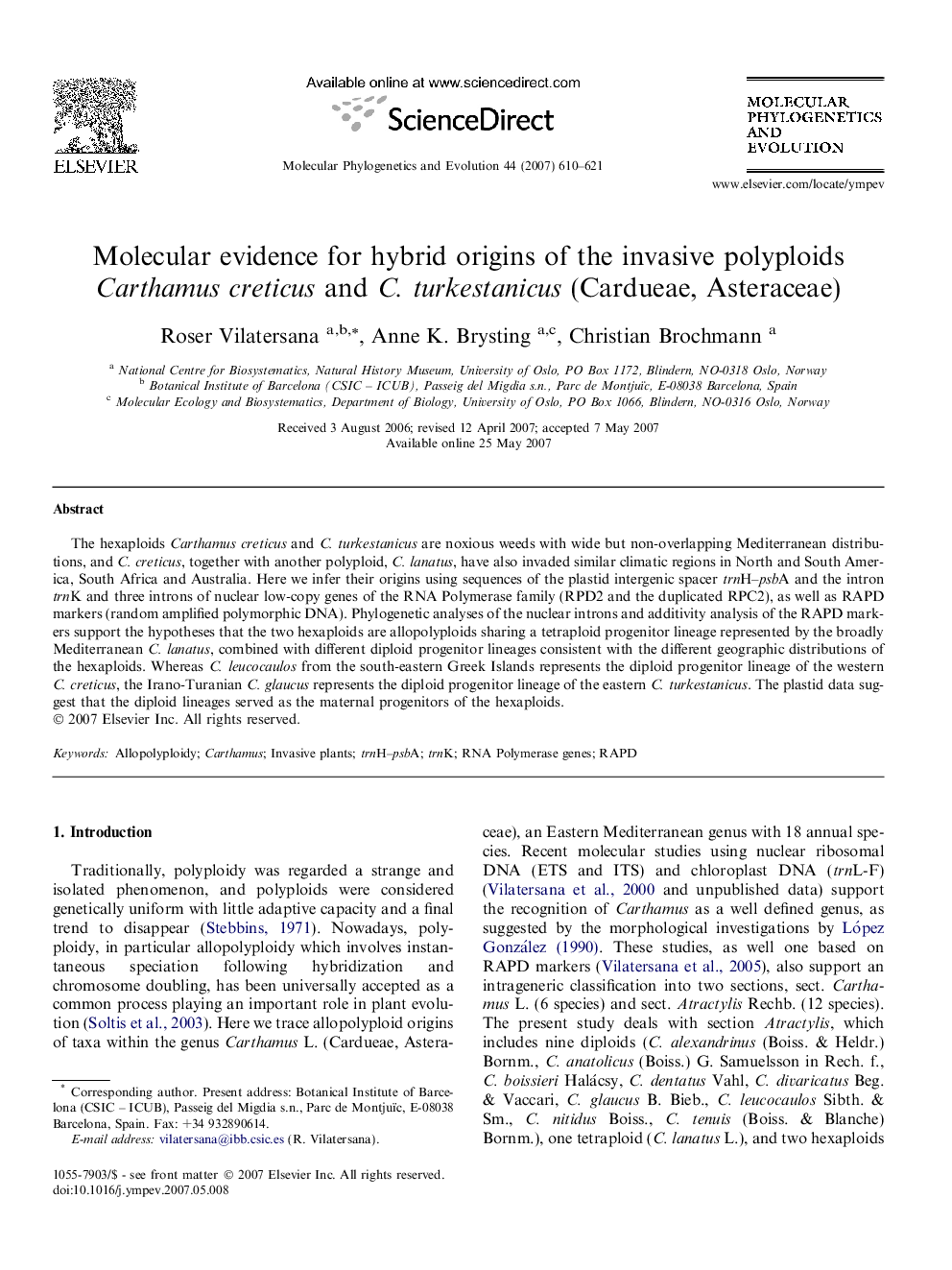| Article ID | Journal | Published Year | Pages | File Type |
|---|---|---|---|---|
| 2835548 | Molecular Phylogenetics and Evolution | 2007 | 12 Pages |
The hexaploids Carthamus creticus and C. turkestanicus are noxious weeds with wide but non-overlapping Mediterranean distributions, and C. creticus, together with another polyploid, C. lanatus, have also invaded similar climatic regions in North and South America, South Africa and Australia. Here we infer their origins using sequences of the plastid intergenic spacer trnH–psbA and the intron trnK and three introns of nuclear low-copy genes of the RNA Polymerase family (RPD2 and the duplicated RPC2), as well as RAPD markers (random amplified polymorphic DNA). Phylogenetic analyses of the nuclear introns and additivity analysis of the RAPD markers support the hypotheses that the two hexaploids are allopolyploids sharing a tetraploid progenitor lineage represented by the broadly Mediterranean C. lanatus, combined with different diploid progenitor lineages consistent with the different geographic distributions of the hexaploids. Whereas C. leucocaulos from the south-eastern Greek Islands represents the diploid progenitor lineage of the western C. creticus, the Irano-Turanian C. glaucus represents the diploid progenitor lineage of the eastern C. turkestanicus. The plastid data suggest that the diploid lineages served as the maternal progenitors of the hexaploids.
